Hello everyone, I’m back with another edition of The Mirror Gallery! This time, instead of looking at a new work in my collection, I’m going to introduce something else that I discovered while immersing myself in the hobby of collecting original Magic art: the Vintage Artist Constructed (VAC) format, or #mtgVAC. First, some background.
The format was created by Joshua Krause at Original Magic Art based off an article about an “Artist Sealed” format by Vorthos Mike (Linnemann). Both of these gentlemen are responsible for the format becoming what it is today, and are active in its continued proliferation.
What is It?
A 60 card, Vintage-legal format where every card must be illustrated by the same artist.
Including basic lands.
Yes, including basic lands. Although this sounds severely limiting in terms of what you can do, it could not be further from the truth. If you enjoy Magic art and haven’t brewed a deck since you first started playing, then this format is exactly what you’ve been looking for.
Where Can I Learn More?
Josh Krause & Mike Linnemann have both written about VAC (in addition to lots of other good content) since the format began in 2015. For the sake of not repeating what’s already been said; this and future articles will look at the decks I’m brewing and building and how they fare in my playgroup and at any tournaments I bring them too, as opposed to looking at the whole format and metagame. Here are few links for reference and to look at the evolution of VAC over the last few years:
Vintage Artist Constructed by Joshua Krause, 2015.
Deck to Beat: Vintage Artist Constructed by Joshua Krause, May 2015.
Vintage Artist Constructed by Mike Linnemann, August 2016.
Vintage Art Constructed Puppathon Tournament Report by Alex Newman, September 2016
State of the Format: Vintage Artist Constructed by Mike Linnemann, October 2017
These articles will show you lots of the popular decks that have defined the format, as well as some of the rogue decks that have and are still popping up as new cards are released. They are a great place to begin thinking about what you may want to build.
I’m Ready to Build a Deck! Now What!
So you’re ready to start exploring Vintage Artist Constructed? You just need to ask yourself these three questions:
- Step 1: Do you have a favorite artist?
- Step 2: Do they have basic lands?
- Step 3: Do they have playable cards in those colors?
If at any point the answer is no, just go back to the previous question until you make it all the way through. If you don’t have a favorite artist, then take ten minutes and scroll through some basic lands, either in your own box of cards or online. You’ll find one, and can start from there.
It really is that simple. Pick an artist, see what lands they have, make sure there are enough playables, and brew away. There are definitely different tiers of decks when it comes to how competitively they may play, but some of my favorite decks are those that do things fun and flavorfully as opposed to all out power. Worry less about winning at first, and enjoy the process.
“So Donny, what decks do you play?”
I thought you might never ask. I currently have five different VAC decks put together. They are as follows, in the order I built them:
Mono-Red Matt Cavotta
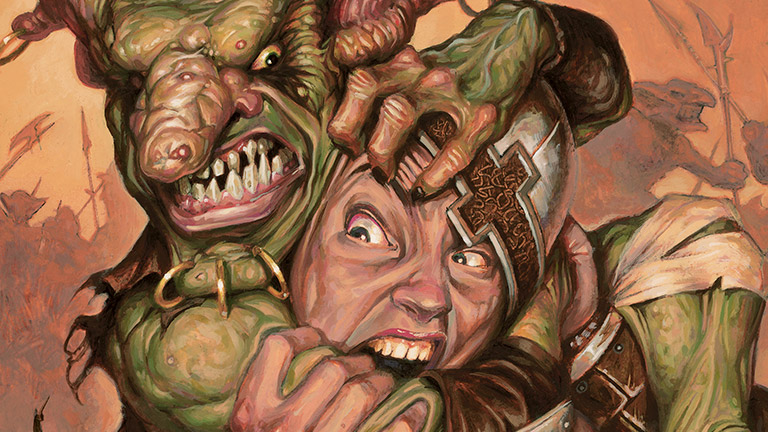
Goblin Piledriver by Matt Cavotta. Traditional.
Colorless/Blue/Black Jason Felix
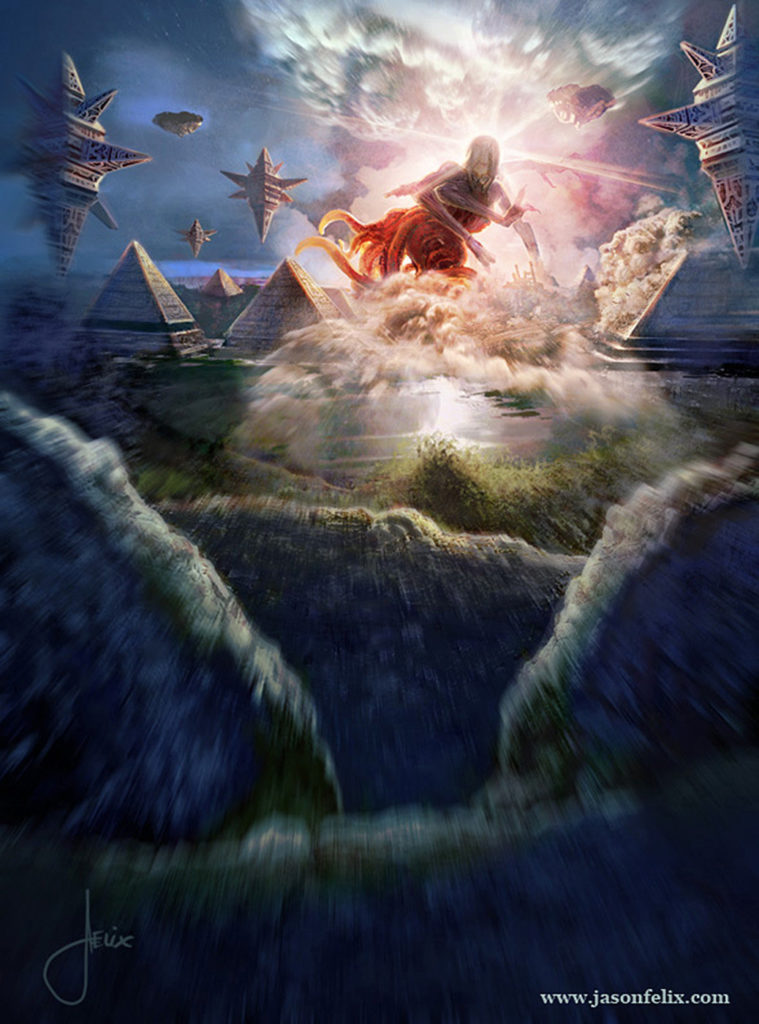
All is Dust by Jason Felix. Digital. That’s right, it’s bigger than card size, too.
Mono-Blue Randy Gallegos
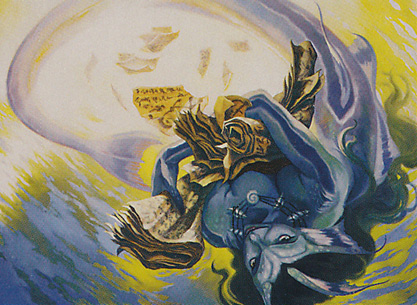
Grimoire Thief by Randy Gallegos. Traditional.
Mono-Green Matt Stewart
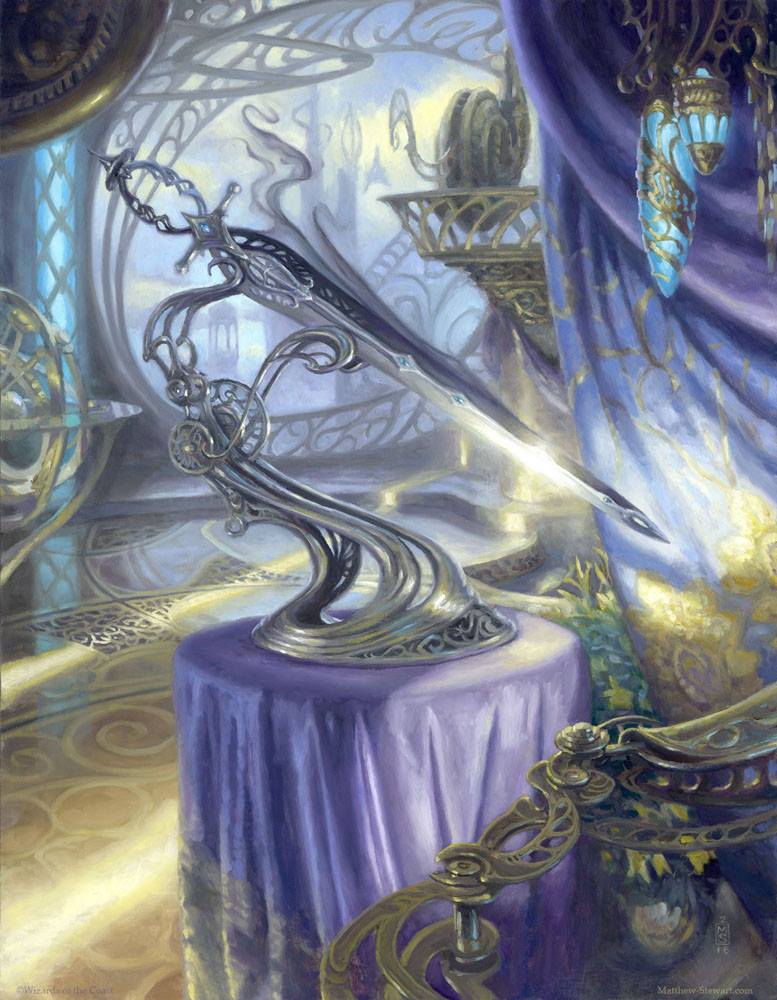
Sword of Light & Shadow by Matt Stewart. Traditional, original sold. Also big(ger), as it was a Masterpiece.
Green/White Ryan Pancoast
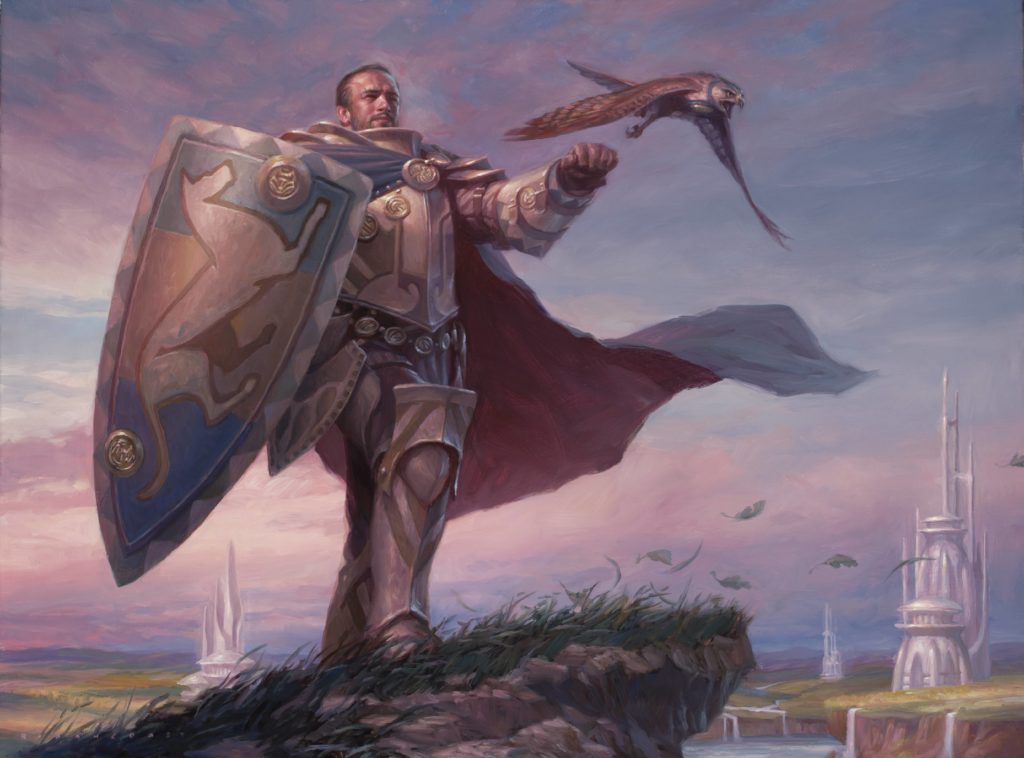
Ranger of Eos by Ryan Pancoast. Traditional. Original available on the secondary market (not from the artist).
Over time we will take a closer look at each of these, as well as some of the new ones that I’m still working on. I just recently finished the Green/White Pancoast deck and will hopefully have a few games under my belt by the time this article is published. I am notorious for starting the next deck before I even have my current one finished, just like acquiring more art before the previous piece is framed. Old habits die hard I guess.
Today I want to talk about the first deck I made, and what is generally my go-to for a competitive VAC event, whether at a tournament or the kitchen table: Mono Red Matt Cavotta.
The Deck
When I decided I wanted to get into the format after reading Mike Linnemann’s article, I needed a deck that both fit my playstyle, and also of course had art that I enjoyed. I also didn’t want to break the bank. Inspired by some of the article’s suggestions, I went to work. Enter Mono-Red Cavotta.
Mono-Red Matt Cavotta
| Creatures (25) 2 Goblin Piledriver 2 Sensation Gorger 2 Goblin Ruinblaster 4 Blood Knight 4 Alloy Myr 4 Etched Champion 2 Jaya Ballard, Task Mage 3 Zo-Zu the Punisher 2 Hoarding Dragon Spells (14) 2 Volcanic Spray 4 Maniacal Rage 2 Argentum Armor 2 Pristine Talisman 2 Mimic Vat 2 Scythe of the Wretched | Lands (21) 21 Mountain Sideboard (15) 2 Goblin Piledriver 3 Goblin Spelunkers 2 Icy Manipulator 3 Tuktuk Scrapper 2 Volcanic Spray 2 Shower of Coals 1 Goblin Ruinblaster |
The Lands
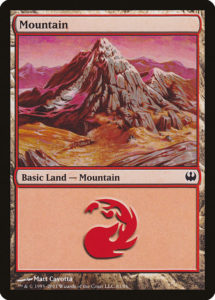
Matt Cavotta has only two lands, Subterranean Hangar and a single Mountain first printed in Invasion and then reprinted in the Knights vs. Dragons Duel Deck. While I like to try and use foil basic lands for my VAC decks, I really like this Mountain art in the new card frame. If I can find enough foil Invasion Cavotta Mountains over time, I may switch over, but for now the non-foil Duel Deck Mountain it is. Subterranean Hangar, even with four copies in addition to the other mana producing artifacts, isn’t consistent or fast enough to move the deck off one color. This is the equivalent of VAC “Big Red,” and we want to go as fast and large as we can, no interruptions.
The Meat & Potatoes
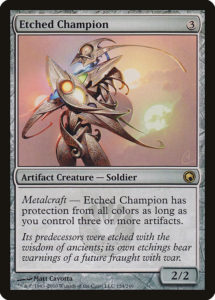
Etched Champion is the all-star. Mike Linnemann referenced this in his original article, and he is absolutely right. Your opponent will literally burn every spell in their hand to prevent Metalcraft from being turned on. Once you have your three artifacts, an equipment is often only a few turns from ending the game. It is worth mentioning that this strategy is bunk against things like the Jason Felix Eldrazi deck I mentioned earlier, which is a deck that is getting substantially better with every set release.
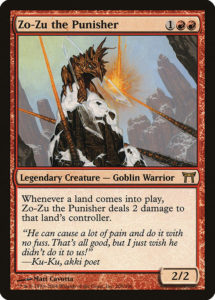
There is a solid Goblin sub-theme within this deck. Piledriver is and has always been above average. Goblin Ruinblaster can ruin strategies as you blast your opponent off their mana base. Zo-Zu punishes your opponent for trying to get to the late game, and works to shorten the distance to get them to zero. And Sensation Gorger is just fun, either refilling your hand or wrecking your opponents.
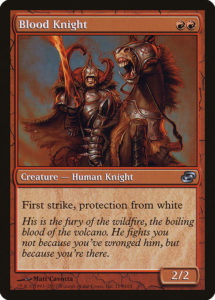
A solid 2/2 for two, his protection from white comes in handy in more games than you would think. Many of the top-tier decks in the format have a white component, so having an advantage game one is helpful. This guy is just downright scary once he’s equipped or enchanted, and opponents will often waste that aforementioned Etched Champion kill spell early on a Blood Knight. And if they don’t, just keep swinging.
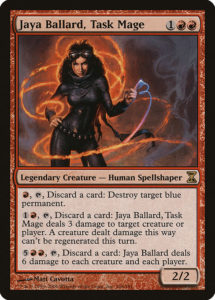
She’s back in Dominaria, but her first card provides some solid utility for this deck. Each of the three abilities comes at the cost of a card, but her last will let you clear most boards—something not available in this deck otherwise.
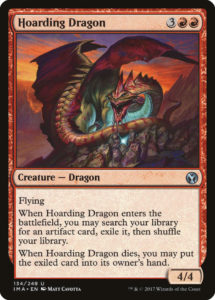
This is a new addition for me in this deck, because I found Furnace Whelp to be so underwhelming. For one more mana we get double power and toughness, plus a search ability that can become pretty relevant. The only caveat is that if Hoarding Dragon gets removed from the game or sent back to your hand, you lose out on that card you exiled. It’s a risk but also one that often pays off. Your opponent has a choice to die in the air to a dragon, or chance you dropping an Etched Champion or equipment they probably don’t have an answer for.
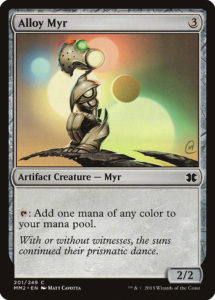
This deck is not super-fast, but Alloy Myr and Pristine Talisman help it go just a little bit faster. The extra life from Talisman comes in handy, especially if things turn into a race as they sometimes will.
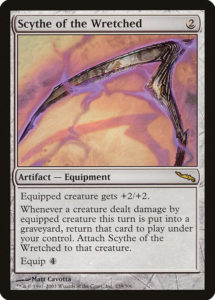
Whether it’s Etched Champion, Blood Knight, or Goblin Piledriver, these cards usually make the difference between whether you win or you lose. Early enhancement is enough to put your opponent behind, and with a general lack of artifact removal across the format there is not much that can be done about them.
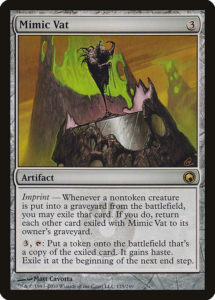
I have limited experience with this card, and I just recently added it back into the main deck. It has potential to be back-breaking, and often gets exploded with removal a turn or two after it hits the board before it gets out of hand. I’ll report back on whether I’ve had any luck with Mimic Vat when I revisit the format in a future article.
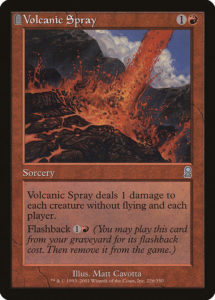
Goblin, token decks, and the like will be at any gathering of Vintage Artist Constructed. This is just being prepared, plain and simple.
Sideboard
There is some serious tech in this sideboard that lets you not only adapt to your matchup, but to entirely change the face of your deck if necessary.
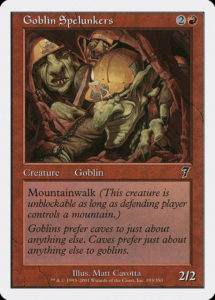
Each of these goblins has their own claim to fame. Goblin Spelunkers comes in against any of the red matchups, and there are more than a few. Goblin Piledriver having protection from blue can be huge against the right threat, and having more available is always good. I haven’t had to bring in the additional Ruinblaster, but with more non-basics coming out every set, this could change.
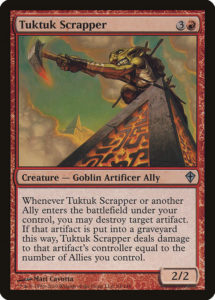
TukTuk Scrapper isyour only artifact removal, so it comes in against a large number of matches. Artifact removal is at a premium in the format, and just like with this deck, creatures like Etched Champion and equipment like Argentum Armor win games once they hit the table. Don’t be on the other end without an answer.
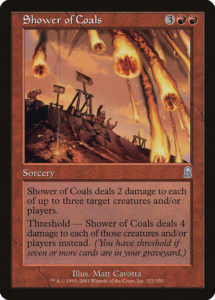
As I mentioned before, Goblins and token decks are a real thing in Vintage Artist Constructed. Sometimes you just need to find Volcanic Spray more quickly than the two main deck copies show up. Shower of Coals is for the same thing, except if Grizzly Bears or equivalent are your problem. Shower of Coals just gets better in the long game, and I’ve had some success bringing it in especially in game three.
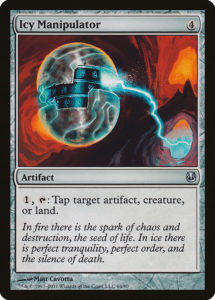
The deck lacks hard removal for big threats—I’m looking at you Baneslayer Angel by Greg Staples—and sometimes Icy Manipulator has to serve as the answer to shut things down long enough to get your guys armored up and in for the win. It’s also a secondary answer for artifact problems where Tuk-Tuk Scrapper can’t get it done.
Cards to Consider
Here are some additional options that could go into the deck.
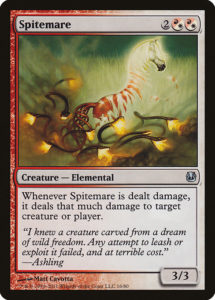
A 3/3 for four is perfectly fine, but I just haven’t found a way to make this guy go over the top. Yes you can equip it and then rush your opponent, or try and burn it yourself, but I haven’t seen enough upside yet to include Spitemare. Could it become an answer to something in the metagame? Maybe in the future.
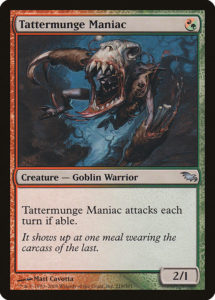
I’ve kicked around the idea of a Cavotta Goblins build, and if that ever happens then this card is worth a shot. It’s great on turn one, but less in the mid-game, and not something you really want to draw late game without a big piece of equipment on the board. Out for now.
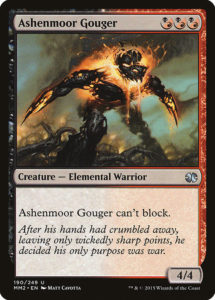
A 4/4 for three in a deck that’s not super worried about blocking is fine. As long as you stay ahead Ashenmoor Gouger could be an appropriate fit, but with the deck already lacking the fastest of speed it doesn’t seem like the best option in the three spot. It’s still on my list to try again further.
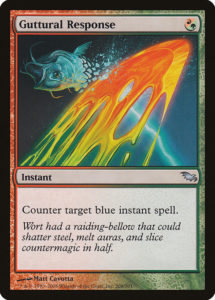
This is a potential sideboard card, especially if blue Control decks continue to rise in popularity and strength. Keep it on your radar, it may become important to include.
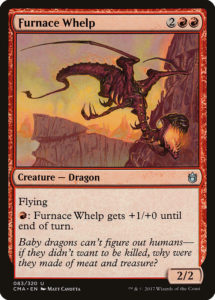
I want Furnace Whelp to be good in here, I really do. But it just dies, instantly, to just about everything before it even becomes useful. I haven’t written it off entirely yet though, and maybe I can find a build where it works. I really like the art, and it is the original for this card first printed in Fifth Dawn.
That’s the deck in its entirety! It’s an absolute blast to play, especially if you enjoy Mono-red, Aggro, Big Red, or similar decks in other formats.
But we aren’t quite done yet! This wouldn’t be a Mirror Gallery article without looking a bit at the artist and their original art in the market, so let’s go a little bit deeper into the man behind the art.
About the Artist: Matt Cavotta

Matt Cavotta has illustrated 180 cards for Magic, most of them entirely tradtionally, beginning in 1999 with Mercadian Masques. After a long hiatus, another of his works was printed in Magic’s latest Un-set Unstable, as he illustrated a promo version of the card Earl of Squirrel. I am not sure whether this art was commissioned for the set or was slush art waiting for a card, meaning art done previously and shelved for a later date and time.
He has written hundreds if not thousands of card names and flavor texts throughout his career with Wizards, and also wrote the “Taste of Magic” column for the old official website from 2005 to 2007. Perhaps his most famous article, “Snack Time with Vorthos,” was written in 2005, and has since served as a point of departure for many Vorthos and flavor enthusiasts of the game. He is currently Senior Creative Director at Wizards of the Coast and still works on Magic: the Gathering to this day.
If you’re curious for more about Matt and his Vorthos side, check out Snack Time with Mike and Ant #17 here for a fabulous interview looking at some of the many cards he illustrated, titled, and wrote flavor for. The interview was originally recorded in August of 2015.
VAC Original Art
In terms of original art, there are no pieces by Matt Cavotta currently on the secondary market, and he does not respond to Magic art related inquiries about any originals he may have remaining in his collection. Occasionally a collector will share an original piece collected in years past on the MTG Art Market or MTG Art Exchange, and it’s certainly a treat to see his work when this happens.
To get your own Cavotta, Original Magic Art has partnered with the artist to sell prints of some of his most beloved pieces. You can find those here.
Wrapping Up
I hope you enjoyed this look at Vintage Artist Constructed, and maybe it’s even inspired you to sit down and start brewing again. I promise you it is quite fun, and that you will look at old cards in an entirely different way. Next time we will be back looking at a new piece of art that is fresh from the framer, and it’s like neither of the two pieces, in medium or in multiverse, we’ve explored previously!
Remember, to see original #mtgart and other #vorthos related things, including #mtgVAC decks, follow me on Twitter. Feel free to ask questions or retweet to continue the conversation. Thanks and see you next time!
Donny Caltrider has been playing Magic since 2002 and collecting original Magic art since 2017. He has an M.A. in Museum Studies from Johns Hopkins University and enjoys telling stories about art, objects, and the intersection of fantasy with real-life. You can find him on Twitter talking about #mtgart, museums, and other #vorthos related goodness. Follow along and continue the conversation!

